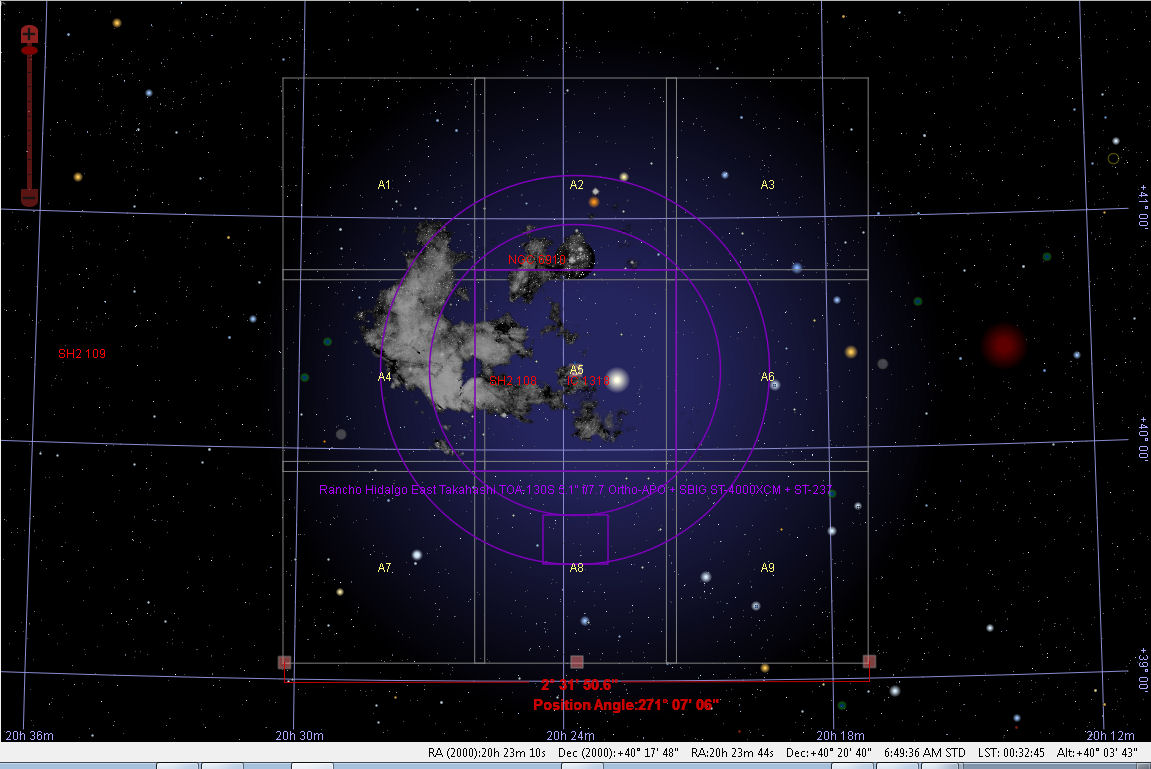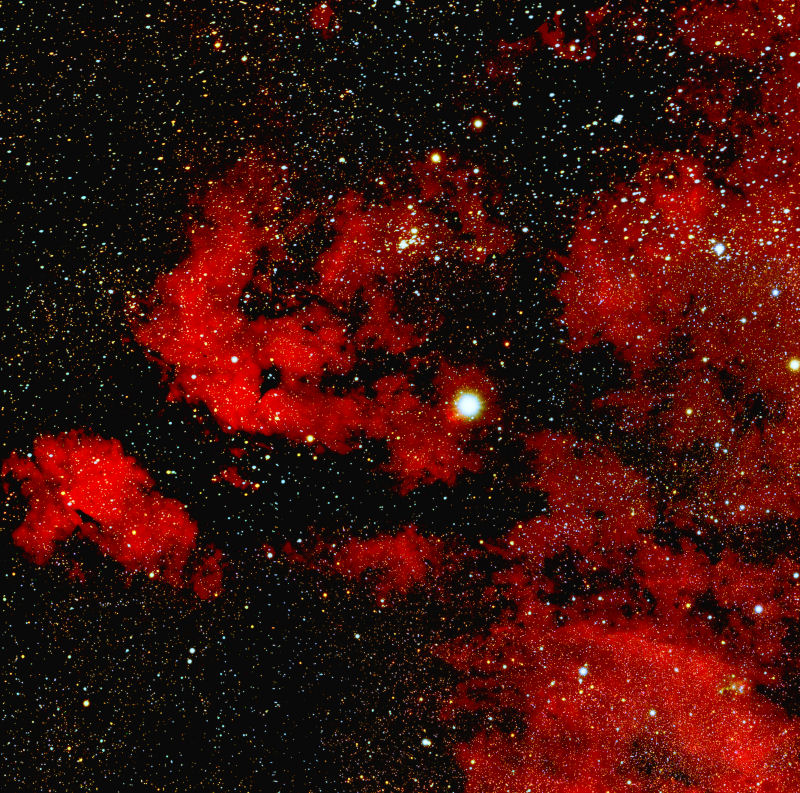Click on image to see full size image...
Object: |
NGC6910 Region |
|---|---|
Date(s): |
21 Jun 14 |
Location: |
Rancho Hidalgo, NM |
Telescope: |
Takahashi TOA-130 at f/7 |
Mount: |
CGE mount |
Camera: |
SBIG ST-4000CM |
Single-Shot Color: |
Yes |
Luminance: |
Mosaic of 9 20 minute exposures bin 1 |
Comments: |
I have just begun experimenting with mosaic imaging. My telescope and camera system only covers about 50 seconds of sky. With mosaic operations you can take multiple images and stitch them together to get coverage of larger areas. It has been working well for me so far I think... The downside is that it takes a lot of exposure time. The above image required 3 hours of exposure time. I did not stack any images in this case. I can shoot about 3 to 4 hours per night so it would take several nights to create enough images to stack. Since the size of the mosaic would be gigantic, I take the individual images and resize them to half their original size before combining them into the mosaic image. This seems to work well and produces images that look pretty good in spite of not being stacked... This is the region around NGC6910 which is the star cluster above the center of the image. This image is a mosaic of 3x3 array of images as determined by the Mosaic operations in TheSkyX Pro. (See image below to see the mosaic overlay.) What surprised me is the extent of the nebulosity in this area. I thought I was covering all of it based on the view shown in TheSkyX but it is much more extensive and covers much more of the sky than I thought. There is apparently much more to the right of the above image. This mosaic image covers a little over 2.5 Degrees of sky. Each of the images comprising the mosaic covers only 52 minutes of sky. There is a 10% overlap of the images so that Maxim DL can register the images so that one large image results. |
Here is TheSkyX mosaic overlay:

TheSkyX Pro Mosaic overlay determines the center points of A1 through A9 images and allows the center points to be sent to the clipboard. You then use those RAs and Decs to set up the automatic shots in ACP.
After capture, the images were then placed and registered using Maxim DL's Mosaic operations. Further imaging operation using CCDStack, eXcalibrator, PhotoShop and PaintShop Pro was then performed...
Objects I couldn't cover before include the Andromeda galaxy, the Pelican Nebula, the North American Nebula, The Rosette Nebula, etc... Will be trying them now as they come into view over the next year...
